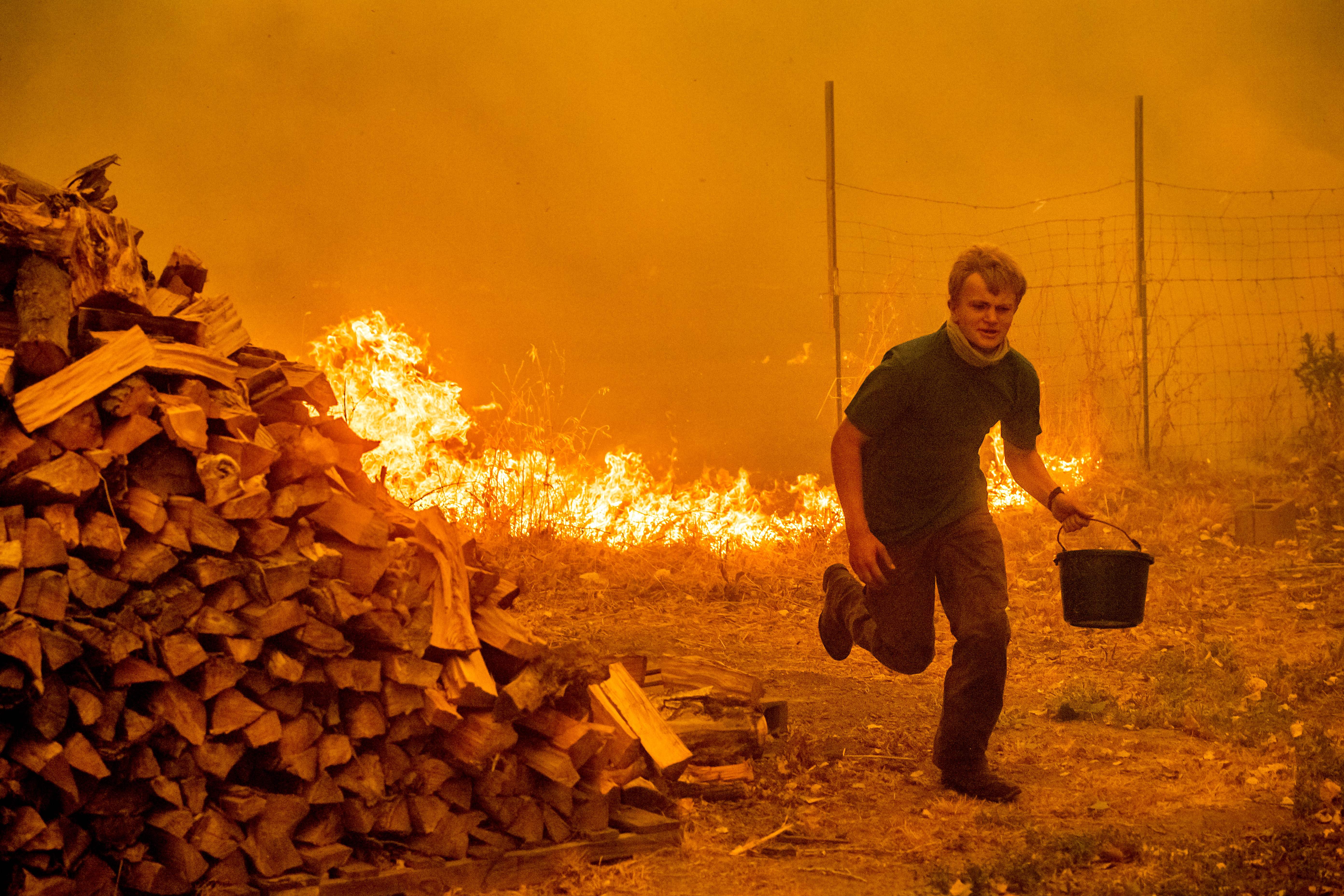
LOS ANGELES — Pacific Gas & Electric Co., California’s largest electric utility, warned Friday afternoon it might cut power as early as this weekend to portions of its service area due to extreme fire risk.
It follows the California Public Utilities Commission last week approving expanded blackouts in high fire-risk areas to reduce wildfire danger. Proactively shutting down power is part of wildfire mitigation plans filed recently by several major utilities.
PG&E filed for bankruptcy protection in late January after being hit with a flood of lawsuits from devastating wildfires in Northern California in 2017 and 2018.
The utility tweeted Friday afternoon it was “actively monitoring weather conditions” and might cut power “within the next 18 to 36 hours in areas of the North Bay and the Sierra foothills where extreme fire risks exist.” Those are some of the same regions that have experienced catastrophic wildfires in recent years.
The state is bracing for perhaps another severe wildfire season after devastating 2017 and 2018 blazes that killed more than 120 people. California has a history of power lines sometimes sparking wildfires, including during high wind conditions when trees and their branches can knock down lines.
“De-energizing power lines may be necessary as a last resort to avert devastating utility caused wildfires,” said California Public Utilities Commissioner Clifford Rechtschaffen.
Utilities are responsible for clearing brush and trees from power lines to prevent fires. In California, utilities face liability under what’s known as inverse condemnation as well as for negligence claims for wildfire and other damaging incidents caused by such things as power lines or other utility equipment.
According to PG&E’s website, the company’s wildfire mitigation plan includes a so-called public safety power shutoff option that could “last several hours or days.”
The drastic step of cutting power has raised concern that the elderly, disabled and those with special medical needs could be at risk if outages last an extended amount of time.
“There’s a lot of concern that these power shutoffs will be the cause of a lot of endangerment,” said Mark Toney, executive director of The Utility Reform Network, a consumer group.
Overall, PG&E has more than 16 million electric and gas customers in its coverage area.
PG&E’s website has warned a “power outage could impact any of the more than 5 million customers who receive electric service from PG&E. This is because the energy system relies on power lines working together to provide electricity across cities, counties and regions.”
Cal Fire blamed the San Francisco-based electric utility’s equipment for at least 17 wildfires in the state’s wine country in October 2017, including two blazes that resulted in a total of 13 fatalities.
Also, Cal Fire in May announced that PG&E’s electrical transmission lines caused the November 2018 Camp Fire — the deadliest and most destructive fire in California history.
Most of the town of Paradise was destroyed in the Camp Fire disaster, in which 86 people died and more than 18,800 structures were lost. PG&E last month indicated it plans to put underground power lines in Paradise.
“The challenge with undergrounding is both expense but also the time,” said Toney. “It would literally take decades to underground major portions of the transmission and distribution lines. And we don’t have decades to wait when it comes to preventing fires.”
Fire investigators in March blamed Edison International’s Southern California Edison unit for the deadly Thomas Fire in Ventura and Santa Barbara counties. The 2017 fire was linked to Edison power lines sparking during high winds, according to investigators from the Ventura County Fire Department.
Also, SCE is facing multiple lawsuits in connection with November’s Woolsey Fire, a deadly blaze which destroyed more than 1,600 structures and damaged another 360 structures in LA and Ventura counties. The official cause remains under probe, but SCE previously disclosed in a Securities and Exchange Commission filing that it “believes that its equipment could be found to have been associated with the ignition of the Woolsey Fire.”
According to SCE, about 35% of the utility’s service area is located in high fire risk areas.
SCE said its wildfire mitigation plan seeks “to address and greatly reduce fire ignitions caused by utility infrastructure. It also is intended to further fortify the electric system against the increasing threat of extreme conditions driven by climate change and the impacts of wildfires if they occur.”
PG&E said its power shutoff program “will be used to complement infrastructure hardening measures when weather conditions threaten power lines in a way that presents an imminent danger to public safety.”

